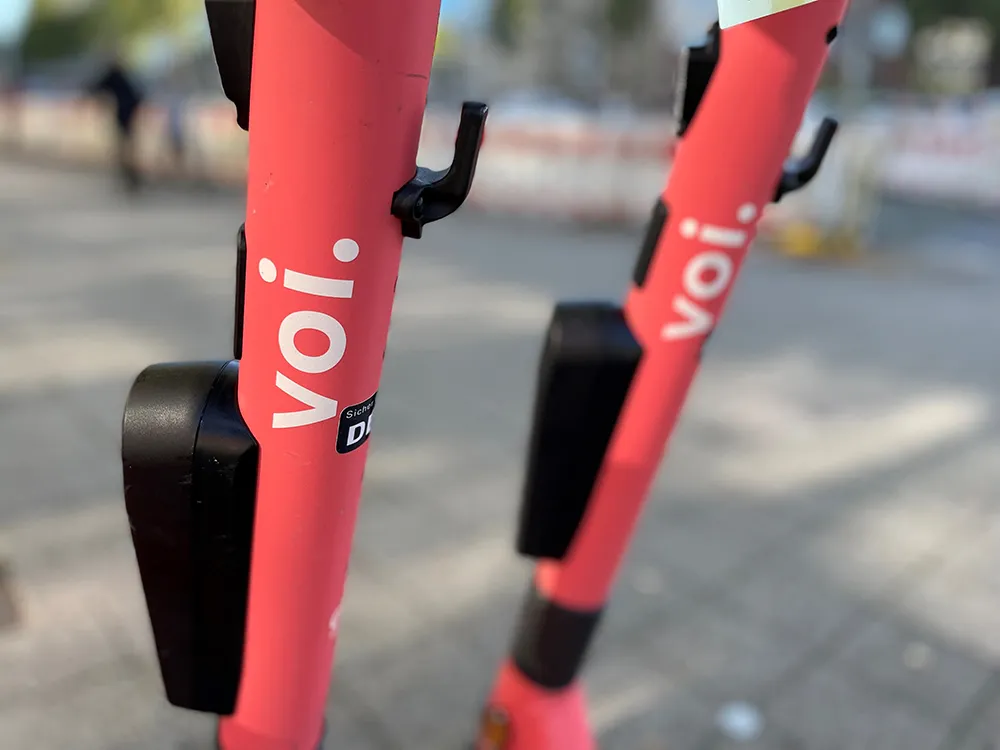
Voi is seeing growing demand for shared e-scooters across the regions where we operate with thousands of rides taken every week, even during winter. Despite being illegal, except on private land, private scooters are also becoming ever more prevalent on our streets.
We understand and totally relate to the reasons why people want to use them. Besides being fun, they are a greener and more affordable alternative to short car rides and they offer the flexibility many people are looking for when going about their daily lives.
I am a keen cyclist and I wouldn’t want any authority to question my ownership of a personal bike. Similarly, I believe in individual rights of ownership and Voi advocates strongly for the legalisation and regulation of all e-scooters. Which is why it is important that the privately owned ones should be kept off public roads until that happens. It is only by extending regulation to include private vehicles that we can address the main issue that affects us all: safety.
As a business, we are obliged to adhere to corporate law when it comes to safety, insurance, transparency and corporate responsibility. Without taking strides towards regulating all of these aspects for both privately owned and shared micromobility stakeholders, the industry will not be given the freedom to protect riders and non-riders, fully develop in terms of technology and cater for a rapidly growing sector to address the climate crisis.
It is important to wrap users in layers of protection: we use geofencing to create No Ride or Slow Ride Zones, and our vehicle speeds are kept at 12.5mph, which is below the legal maximum of 15.5mph laid down by the UK Department for Transport. Our mechanics and ground staff regularly service and maintain our vehicles and complete rigorous quality checks, and we educate riders through pop-up events, webinars and in-app messaging to make sure they are safe and follow the rules of the road.
We also collaborate closely with the local police and councils to ensure the safe and responsible introduction of this new sustainable transport mode.
In order to create a level playing field in the e-scooter market, the law needs to catch up with the changing face of transport. First and foremost, primary legislation should create a new classification of vehicles to cover e-scooters, one that recognises the differences between scooters and electric-assist pedal cycles.
Without this, it will be hard for other legislative changes that guarantee fair, future regulation of both shared and private e-scooters to take place.
Legislation permitting the use of private e-scooters should, therefore, include similar strict provisions to those currently in place for shared micromobility providers. These include rules around insurance and vehicle specifications such as maximum weight, speed and licence-plate IDs to ensure safe travel, whilst allowing people to embrace micromobility to achieve the government’s ambitious net-zero targets.
Be it private or shared, however, there is no question that the demand for e-scooters is increasing. This rapid change in how we get around must be met with a similarly speedy infrastructural one. From segregated cycle lanes to car-free streets, or bespoke parking facilities at busy spots such as stations, social or shopping hubs, it’s crucial for operators and councils to work together. For example, we must collaborate quickly on finding alternative parking solutions, such as on-street parking and parklets to keep pavements for pedestrians.
As e-scooters aren’t currently allowed on UK public transport, parking hubs for shared e-scooter riders are invaluable for the growing numbers of people who use them to complement their public transport journeys.
 Most of us want better cities to live in by giving low carbon alternatives to replace short car journeys. The sharing model can serve to speed up this change by supporting local authorities in meeting their targets to reduce congestion, carbon and improve air quality by providing data that proves change is happening. This can contribute to improving the way we travel, making transport more accessible and inclusive for all. ITS
Most of us want better cities to live in by giving low carbon alternatives to replace short car journeys. The sharing model can serve to speed up this change by supporting local authorities in meeting their targets to reduce congestion, carbon and improve air quality by providing data that proves change is happening. This can contribute to improving the way we travel, making transport more accessible and inclusive for all. ITS
About the Author:
Matthew Pencharz is head of public policy at Voi UK, Ireland and the Netherlands










